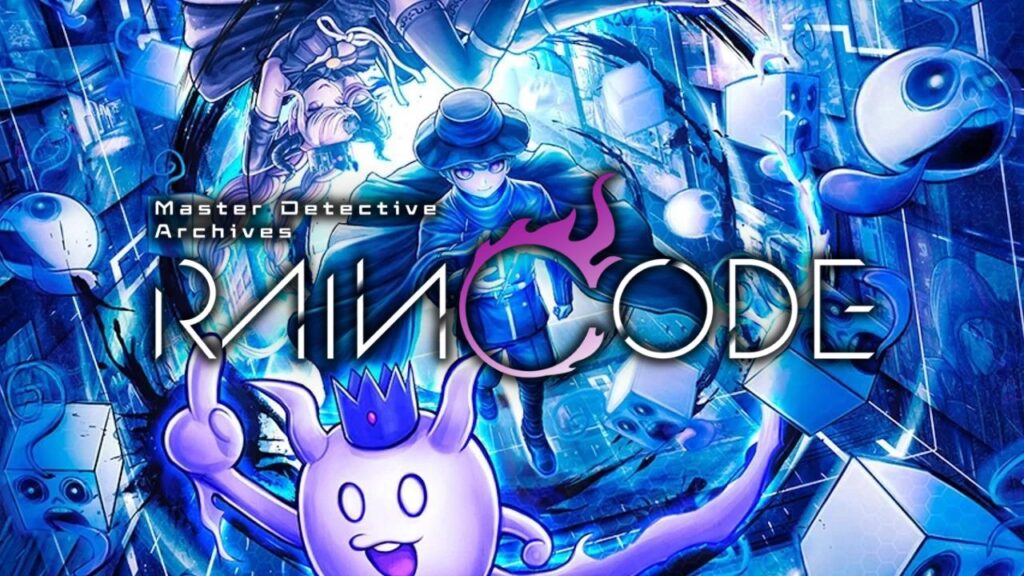

Master Detective Archives: Rain Code, developed by Too Kyo Games and co-developed and published by Spike Chunsoft for the Nintendo Switch, takes players on a pixelated journey into the world of detective mysteries. This review dives deep into the game, dissecting various aspects to uncover what makes it a standout in the adventure gaming genre.
You are currently viewing a placeholder content from YouTube. To access the actual content, click the button below. Please note that doing so will share data with third-party providers.
More Information
At its core, “Master Detective Archives: Rain Code” is a detective mystery game with a captivating narrative. Players assume the role of a brilliant detective tasked with solving a series of intricate cases. The storytelling is a standout feature, filled with twists, turns, and unexpected revelations.
Each case in the game is like a self-contained story, but there’s an overarching narrative that ties them together. This approach keeps players engaged eager to unravel the overarching mystery while solving each individual case. Character development and dialogue choices contribute to immersive storytelling.

The gameplay in “Rain Code” leans heavily on traditional point-and-click adventure mechanics. Players explore various environments, interact with objects, and question characters to gather clues and evidence. This methodical approach to detective work is both engaging and rewarding.
The puzzles and riddles within the game are cleverly designed, challenging players to think critically and use their deductive skills. While some puzzles may stump players temporarily, they are never overly obtuse or frustrating. The game strikes a balance between challenge and accessibility.

“Rain Code” adopts a pixel art style that harks back to classic adventure games of the past. The pixelated visuals are charming and nostalgic, creating a sense of immersion that transports players to a bygone era of gaming. The attention to detail in character sprites and environmental design is commendable.
Despite its pixelated aesthetic, the game manages to convey a wide range of emotions and atmospheres. The use of lighting, color, and pixel animation adds depth and dimension to the world. The visual style is not only a nod to retro gaming but also a testament to the enduring appeal of pixel art.

Sound design in “Rain Code” is understated yet effective. Ambient sounds, character voices, and environmental noises contribute to the game’s atmosphere. While there may not be extensive voice acting, the subtle sound cues help players immerse themselves in the world of detective work.
The musical score is a highlight, with a jazzy and mysterious soundtrack that perfectly complements the game’s detective theme. The music adapts to different situations, enhancing the tension during critical moments and setting the mood for exploration and discovery.

“Rain Code” introduces players to a diverse cast of characters, each with their own quirks and personalities. As players interact with these characters, they uncover their backstories, motivations, and secrets. These revelations add depth to the overall narrative and create a sense of attachment to the cast.
The protagonist, the master detective, is a well-realized character with their own strengths and weaknesses. Through dialogue choices and interactions, players can shape the detective’s personality and approach to solving cases. This player agency adds a layer of immersion and personalization to the experience.

Exploration is a central element of “Rain Code.” Players are encouraged to thoroughly investigate each environment, searching for clues, evidence, and hidden objects. The pixel art design extends to the environments, with intricate details that reward players who take the time to scrutinize every pixel.
The game’s locations are diverse, ranging from dimly lit alleys to opulent mansions. Each area presents its own set of challenges and puzzles, making exploration a key component of the gameplay. The sense of discovery is heightened by the pixel art style, which conceals secrets within every scene.

Pacing in “Rain Code” is deliberate, mirroring the cadence of a detective’s work. The game balances moments of tension, such as interrogations and confrontations, with quieter, investigative sequences. This ebb and flow of gameplay keeps players engaged and invested in solving the mysteries.
Tension is effectively built through the narrative’s pacing and the use of music and sound cues. As players draw closer to unraveling a case, the stakes rise, creating a sense of urgency and anticipation. The game’s episodic structure contributes to this sense of progression and tension.

“Rain Code” offers replayability through multiple routes and choices. Depending on players’ decisions, the outcome of cases and character relationships can vary. This encourages replaying the game to explore different narrative paths and uncover hidden secrets.
The game also incorporates optional objectives and collectibles within each case, adding to the replay value. Completionists will find plenty of reasons to revisit the game and aim for a 100% completion rate.
In conclusion, “Master Detective Archives: Rain Code” is a pixelated masterpiece in the detective adventure genre. Its compelling storytelling, clever puzzles, and nostalgic visuals create an immersive experience that pays homage to classic adventure games while offering something fresh and engaging.
For fans of detective mysteries and point-and-click adventures, “Rain Code” is a must-play title that delivers on both its detective theme and pixel art style. It’s a reminder that even in a digital world filled with high-end graphics, the charm of pixel art and the allure of a good mystery are timeless.


You need to load content from reCAPTCHA to submit the form. Please note that doing so will share data with third-party providers.
More Information